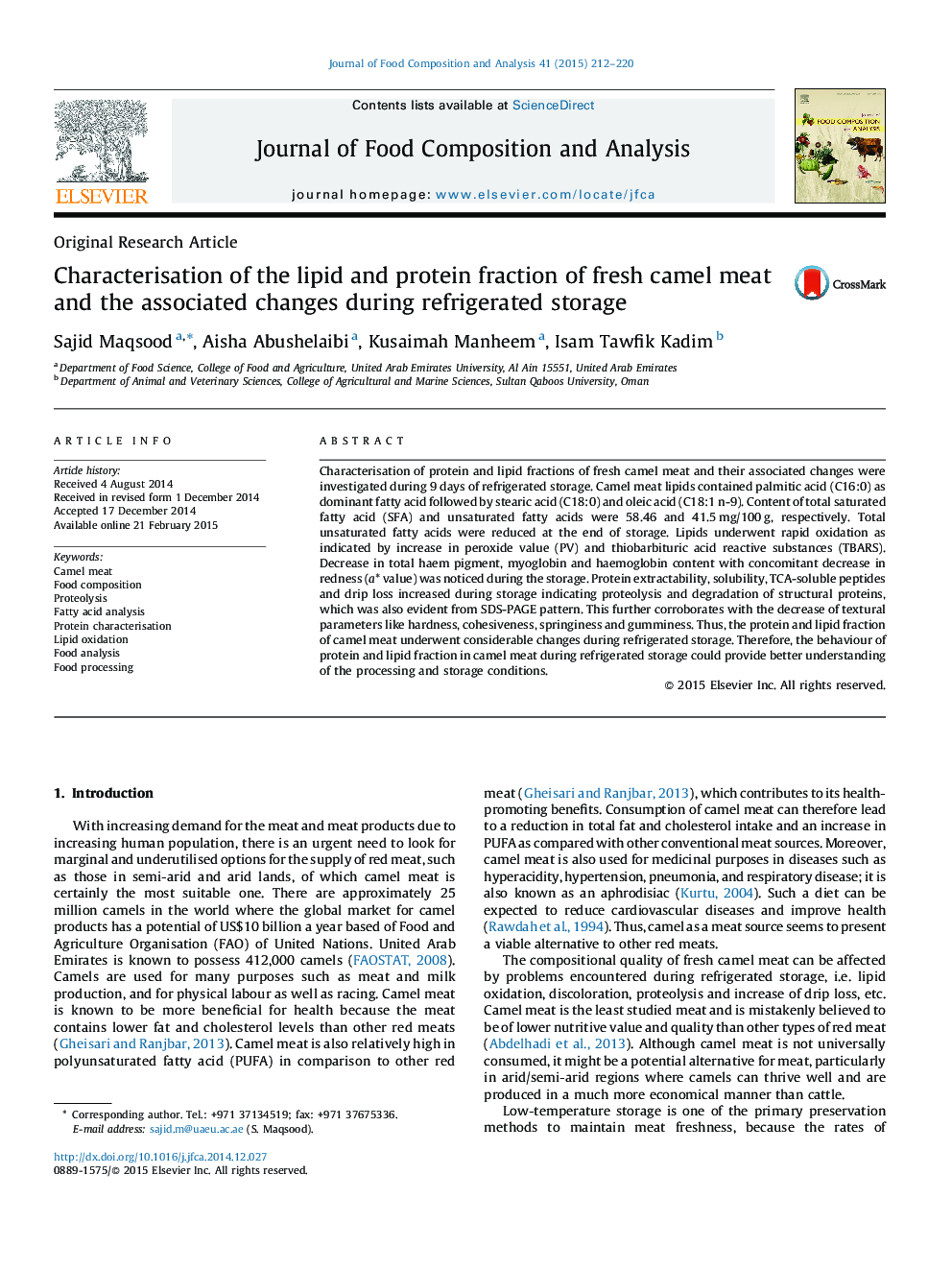| Article ID | Journal | Published Year | Pages | File Type |
|---|---|---|---|---|
| 1218234 | Journal of Food Composition and Analysis | 2015 | 9 Pages |
•Characterisation and changes of protein and lipid in camel meat were investigated.•High PUFA along with high amount of haem protein were found in camel meat.•TCA-soluble peptides, protein extractability and solubility increased during storage.•Continuous drip loss and drastic changes in texture and colour were observed.
Characterisation of protein and lipid fractions of fresh camel meat and their associated changes were investigated during 9 days of refrigerated storage. Camel meat lipids contained palmitic acid (C16:0) as dominant fatty acid followed by stearic acid (C18:0) and oleic acid (C18:1 n-9). Content of total saturated fatty acid (SFA) and unsaturated fatty acids were 58.46 and 41.5 mg/100 g, respectively. Total unsaturated fatty acids were reduced at the end of storage. Lipids underwent rapid oxidation as indicated by increase in peroxide value (PV) and thiobarbituric acid reactive substances (TBARS). Decrease in total haem pigment, myoglobin and haemoglobin content with concomitant decrease in redness (a* value) was noticed during the storage. Protein extractability, solubility, TCA-soluble peptides and drip loss increased during storage indicating proteolysis and degradation of structural proteins, which was also evident from SDS-PAGE pattern. This further corroborates with the decrease of textural parameters like hardness, cohesiveness, springiness and gumminess. Thus, the protein and lipid fraction of camel meat underwent considerable changes during refrigerated storage. Therefore, the behaviour of protein and lipid fraction in camel meat during refrigerated storage could provide better understanding of the processing and storage conditions.
